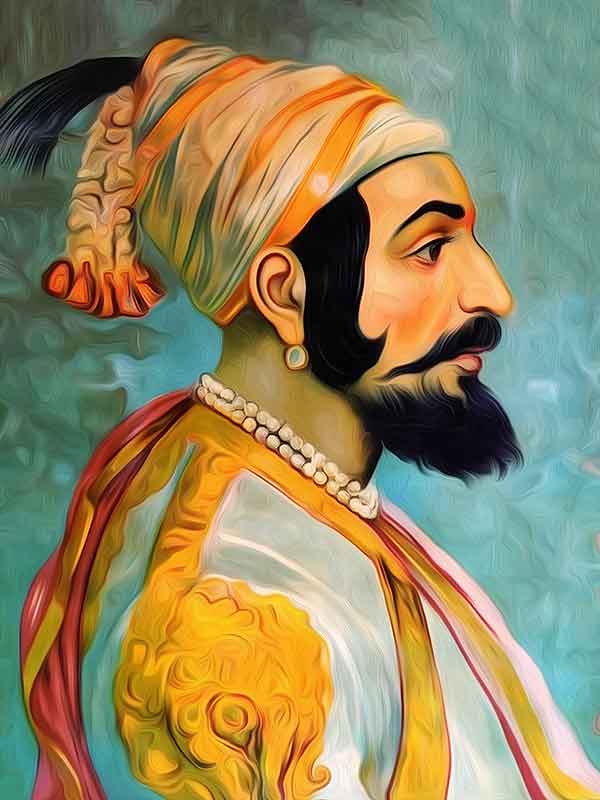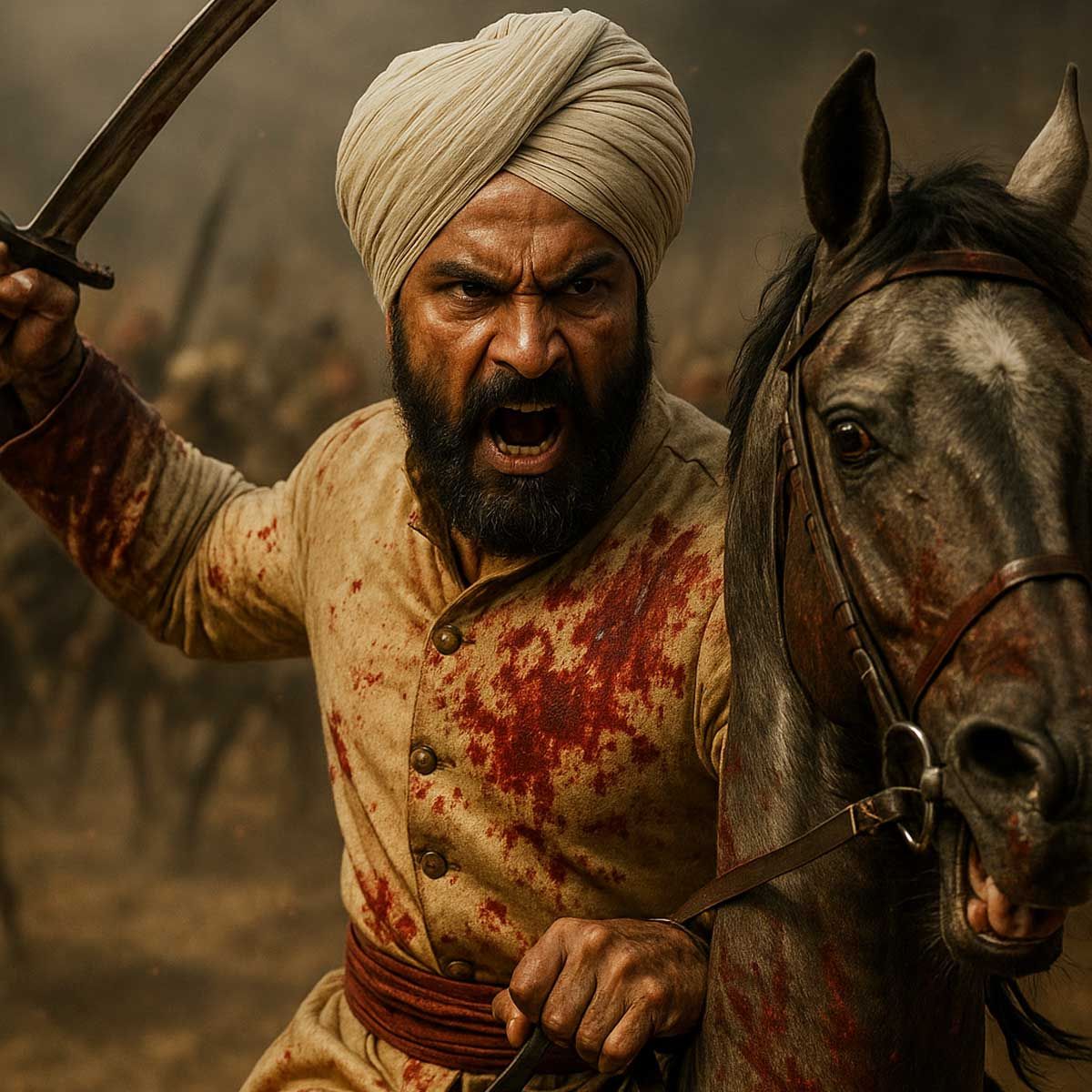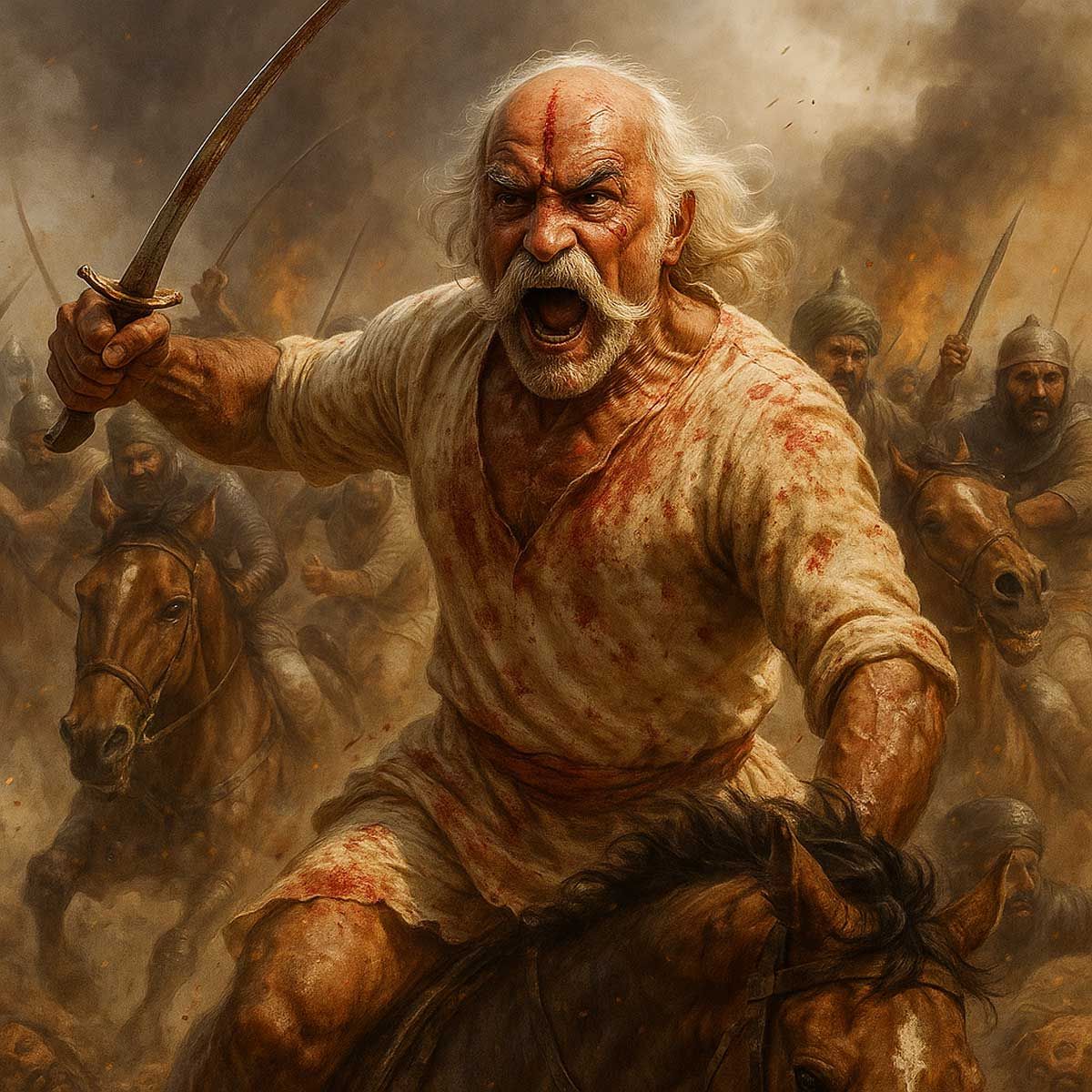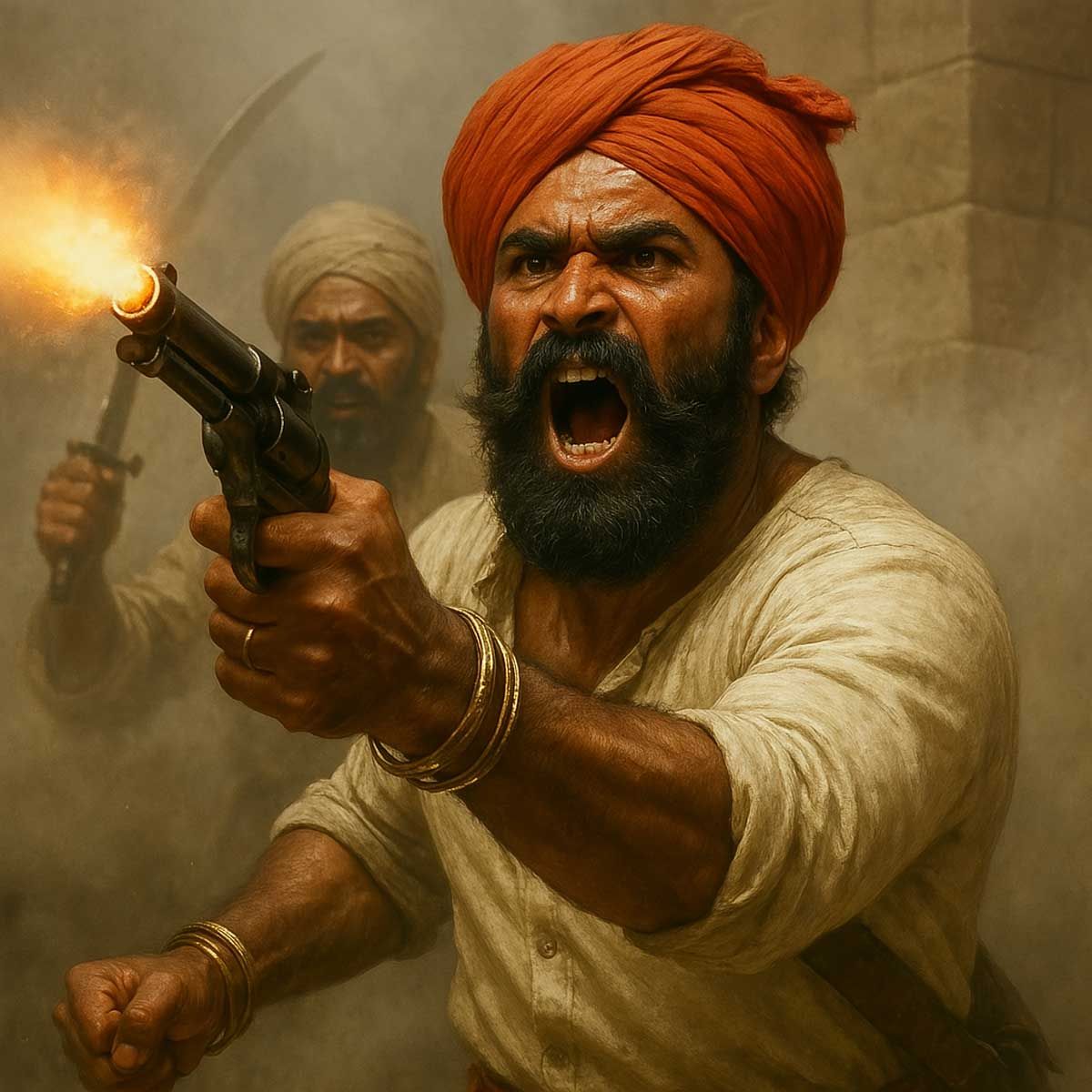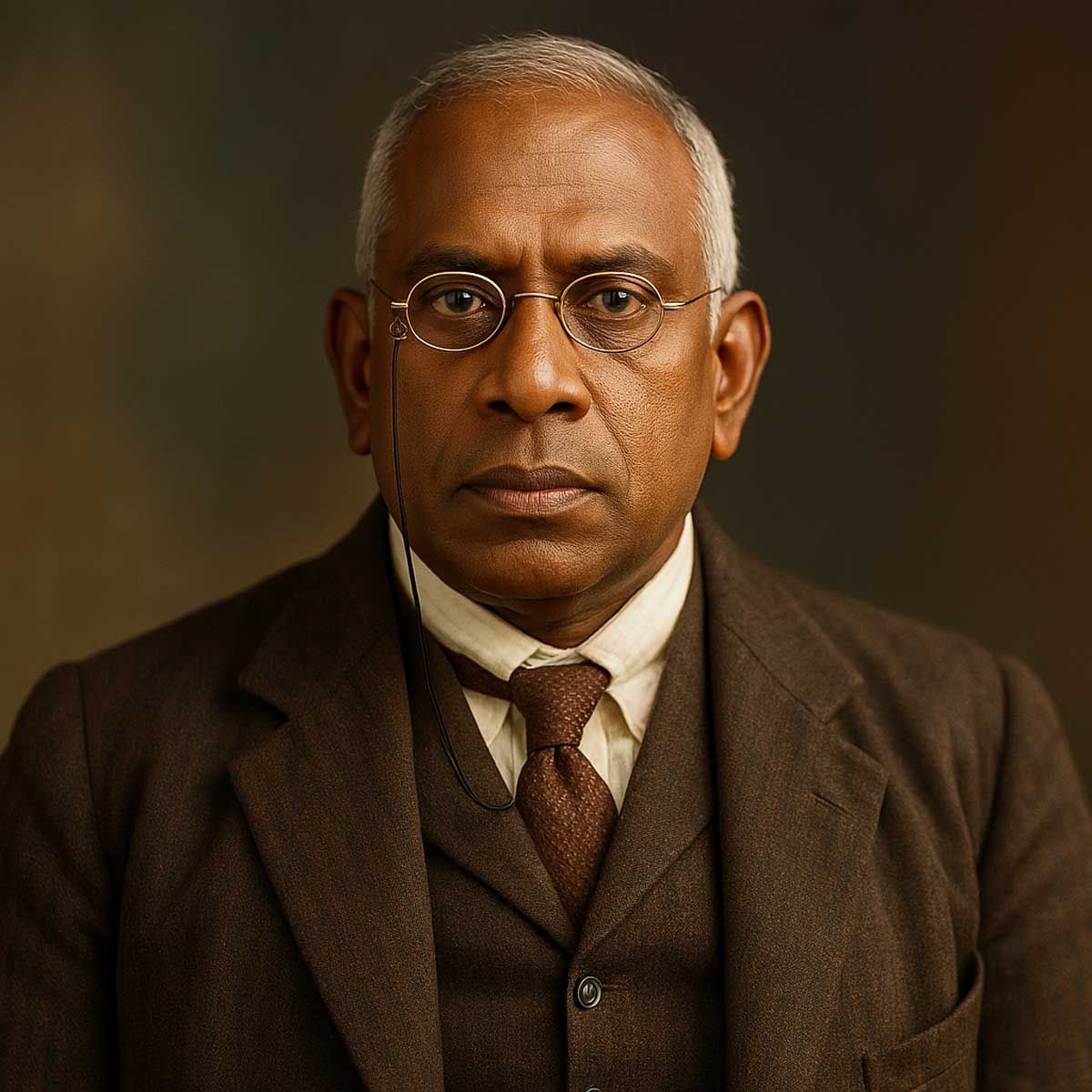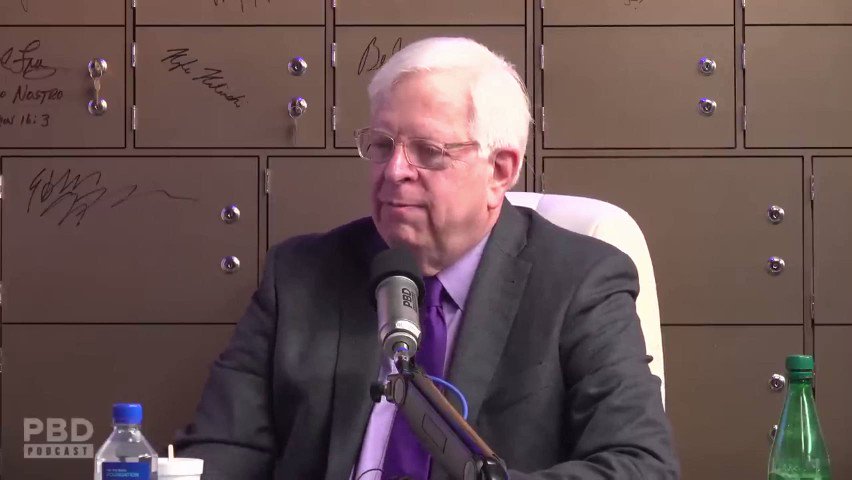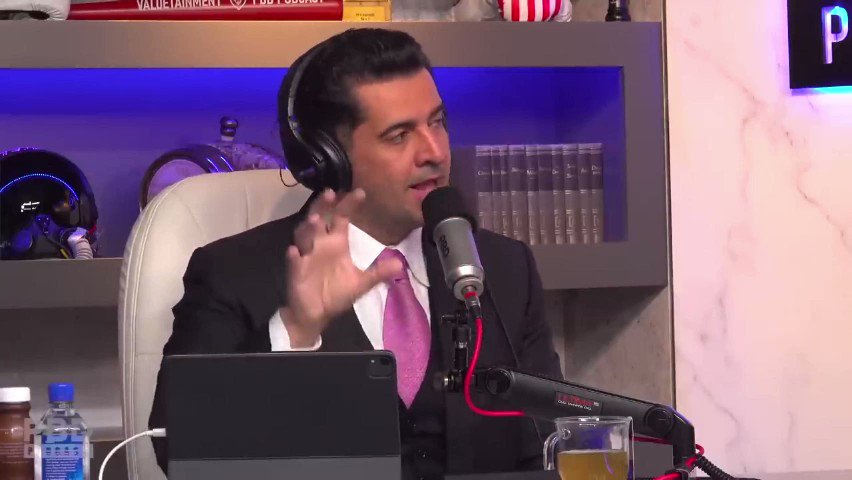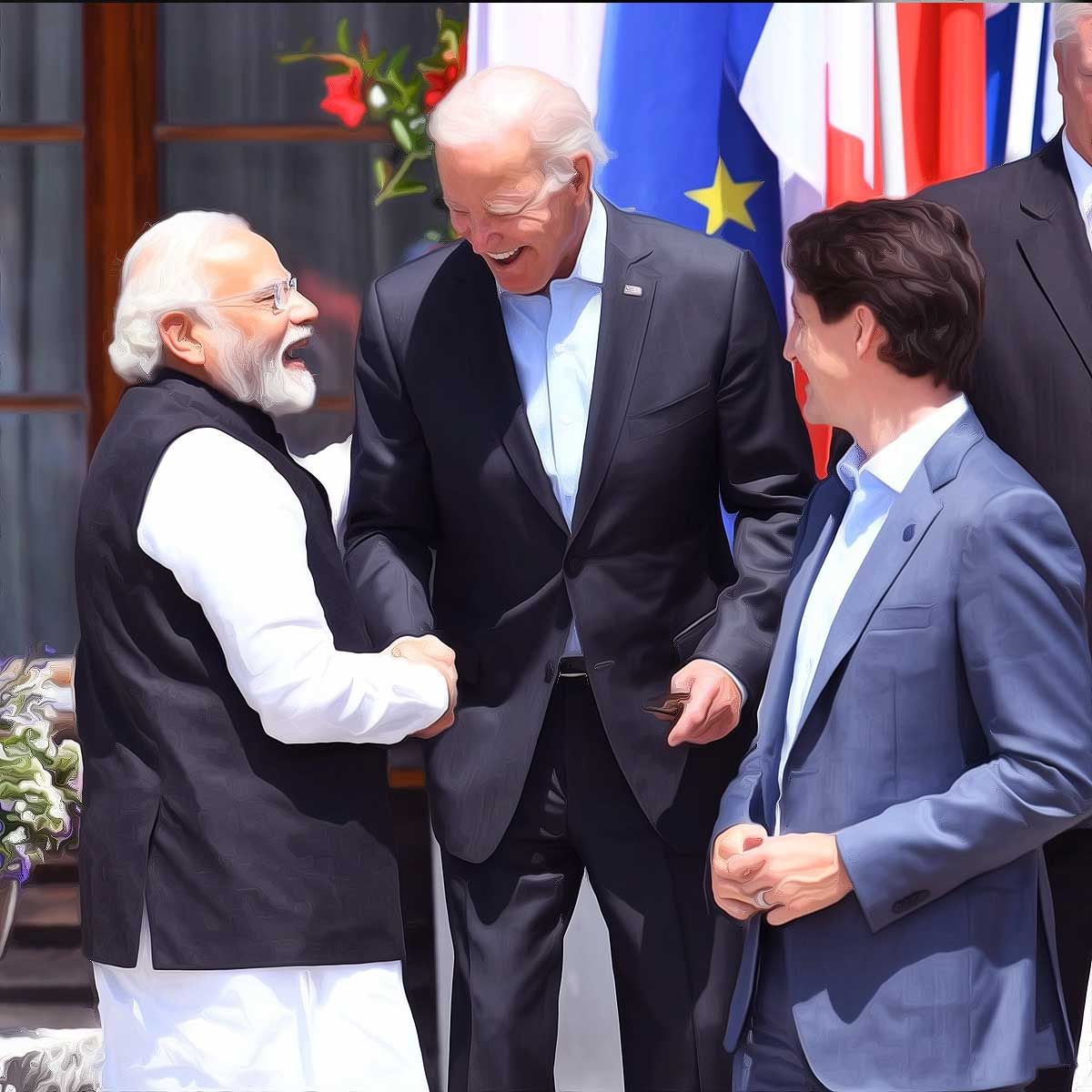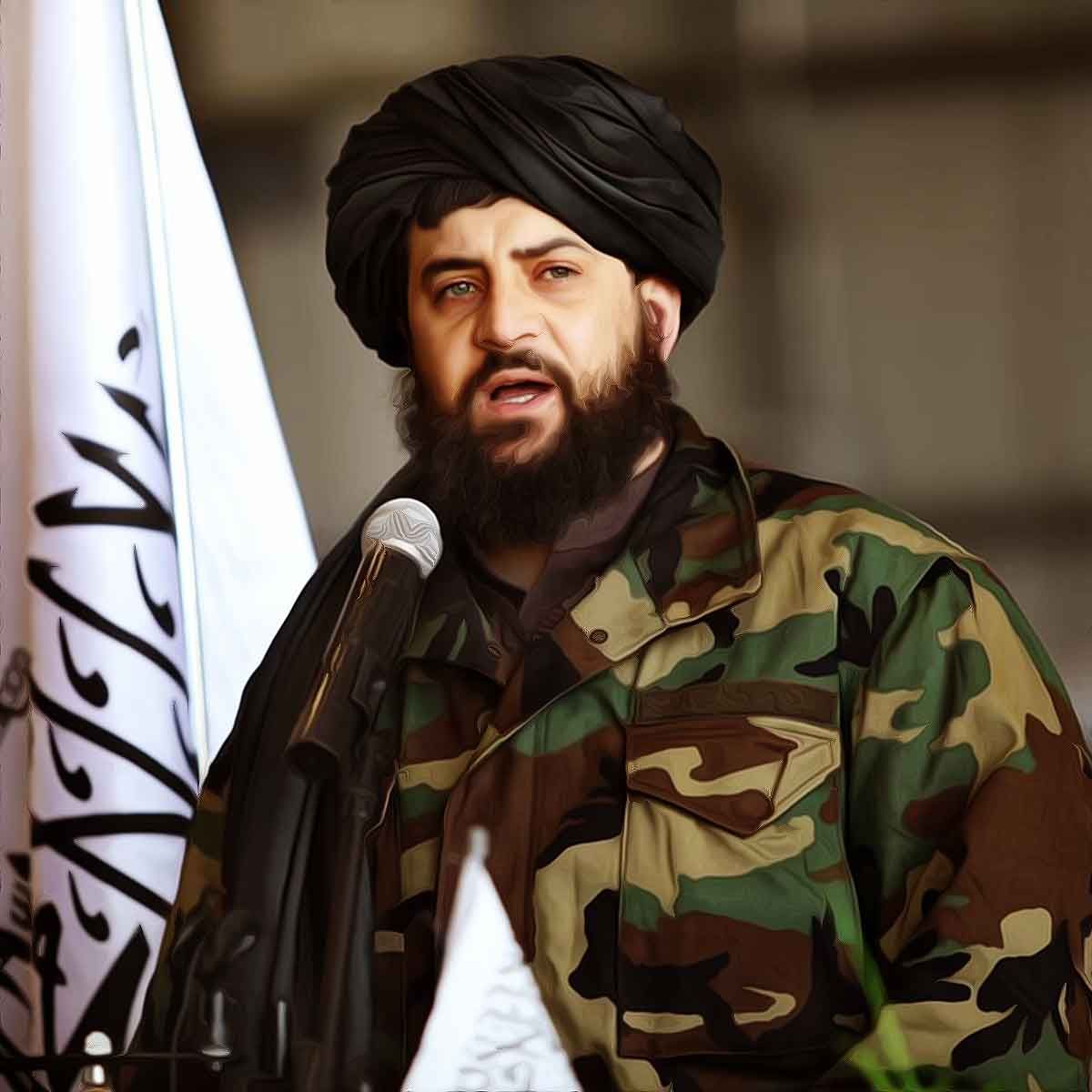MORE COVERAGE
Twitter Coverage
Satyaagrah
Written on
Satyaagrah
Written on
Satyaagrah
Written on
Satyaagrah
Written on
Satyaagrah
Written on
JOIN SATYAAGRAH SOCIAL MEDIA
A 900-year-old Shiva temple at Preah Vihear sparked deadly clashes between Thai and Cambodian troops, reigniting a decades-old border dispute despite ICJ rulings and UNESCO status, as both nations stand firm on sovereignty amid rising regional tension

Tensions have once again turned violent between Thailand and Cambodia over a sensitive border region that both countries claim ownership of. The focal point of this heated conflict is the ancient and sacred Preah Vihear Shiva temple, a Hindu architectural wonder that stands tall for over 900 years in Cambodia’s Preah Vihear province. This temple is not just an archaeological site—it is home to a Shiva Lingam, a symbol considered highly auspicious in Hindu tradition. Its presence lends profound cultural and religious value to the land, making it a deeply emotional issue for both nations.
|
On the morning of 28th May, the situation escalated sharply when a Cambodian soldier lost his life in an armed clash that broke out between Cambodian and Thai troops. The firefight occurred in Techo Morakot village, nestled within the Morakot commune of Choam Ksan district. This deadly incident followed weeks of growing hostility and suspicion along the border.
According to Cambodia’s Ministry of Defense, the attack was completely “unprovoked” and reportedly began when Thai troops launched an initial offensive targeting a position that had long been held by Cambodian forces. In contrast, the Royal Thai Army insisted that their soldiers came under attack first. They said Cambodian soldiers opened fire and the Thai side "responded accordingly" in self-defense.
In a statement reflecting Thailand’s official position, Defense Minister Phumtham Wechayachai stated, “I have been informed that the return fire was necessary to defend ourselves and protect Thailand’s sovereignty. I have instructed caution. Although the ceasefire holds, both sides continue to face each other.” The remarks underline Thailand's claim of acting out of defensive necessity rather than provocation.
Further clarifying the Thai stance, Major General Winthai Suvaree, the spokesperson for the Thai army, explained that the clash happened during an attempt to de-escalate. “Cambodian forces misunderstood the situation and started using weapons, so Thai forces retaliated,” he said. Thai troops, according to him, were merely trying to persuade their Cambodian counterparts to pull back from setting up a post in a disputed area.
From Cambodia’s side, however, the tone remained cautious and peace-oriented. Their Defense Ministry publicly emphasized, “This clash is not something Cambodia desires. We will continue discussions with the Thai Ministry of Defense to find a mutual solution that will quickly return the situation to normal and prevent such incidents from occurring again.” Their statement aims to frame Cambodia as the more conciliatory party in this dispute.
On 29th May, Cambodian Prime Minister Hun Manet addressed his people directly. In a firm but composed message, he discouraged fear and misinformation. “People should not panic over unverified material being circulated,” he said, warning citizens not to give in to rumors. He added, “For this reason, I hope that the upcoming meeting between the Cambodian and Thai army commanders will produce positive results to preserve stability and good military communication between the two countries, as we have done in the past.” His message sought to reassure the population while maintaining a diplomatic posture.
Despite being abroad at the time, Hun Manet made it clear that he was fully in control. “Even though I am in Japan, the command system and hierarchy for major military operations such as troop movements remain under my full responsibility as prime minister,” he asserted. The fighting, which lasted around 10 minutes, eventually stopped after local commanders intervened and issued a ceasefire. Both nations agreed to withdraw their troops, temporarily easing tensions.
Looking ahead, both countries have planned to form a Joint Boundary Committee in the next two weeks. The committee is intended to "solve the problem of the border conflict" through dialogue and diplomacy. However, the Royal Cambodian Army clarified that it does not plan to withdraw entirely from the disputed zone, despite agreeing to work through “existing mechanisms to resolve disputes.”
|
The contentious border between Thailand and Cambodia
Spanning more than 800 kilometers (about 500 miles), the border dividing Thailand and Cambodia has a complicated legacy. Much of it was drawn during French colonial rule in Indochina, and ever since, it has been the center of repeated disputes. These unresolved boundaries have sparked armed clashes, the most notable being the one in 2008, when tensions peaked shortly after the Preah Vihear temple was declared a UNESCO World Heritage Site.
Another serious confrontation broke out in 2011, again near the sacred 11th-century temple. That incident led to multiple casualties and injuries on both sides. Over the years, the intermittent violence has claimed at least 28 lives, reflecting how volatile the issue remains.
The latest tensions trace back to February, when Cambodian troops and their families sang their national anthem inside the Prasat Ta Moan Thom temple. This act, seemingly symbolic, angered Thai troops stationed nearby. What followed was an intense verbal exchange, part of which was recorded by a Thai individual and shared online, quickly going viral and further fuelling nationalistic sentiments.
Despite repeated calls for calm, underlying mistrust persists. Cambodian Prime Minister Hun Manet warned in March that while peaceful resolution remains his top priority, the country would not hesitate to use military force if Thai soldiers violate Cambodian sovereignty. In a May meeting, military officials from both sides struck a temporary balance—agreeing to maintain their current troop positions and station just five soldiers each at the disputed temple site in a bid to prevent further flare-ups.
This cautious truce might provide breathing space, but with centuries of cultural pride, colonial injustice, and regional suspicion still in the air, the border between Thailand and Cambodia remains one of Southeast Asia’s most sensitive flashpoints.
The Ancient Temple
The Preah Vihear temple, nestled in the mountains of northern Cambodia, holds a rich and complex history that stretches far beyond the modern political boundaries of Southeast Asia. This sacred temple is one of the finest remaining examples of Khmer Empire architecture, built predominantly during the 11th and 12th centuries when the empire was at its peak. The Khmer people, whose descendants today form the majority population of Cambodia, once ruled over vast areas of mainland Southeast Asia, including what is now Thailand, previously known as Siam. Among their monumental achievements is the world-renowned Angkor Wat complex, a symbol of Khmer architectural genius.
Khmer temples are celebrated for their breathtaking design and spiritual depth. Hinduism, the dominant faith of Khmer rulers at that time, strongly influenced these structures. Preah Vihear, too, reflects this deep-rooted Hindu heritage and also features elements of Buddhism, which gained prominence in later centuries. Despite being of Khmer origin, the temple has not always been under Cambodian rule. At various points in history, it was controlled by Siamese kingdoms and, more recently, the Thai state, highlighting the shifting nature of power in the region.
Another important temple, Prasat Ta Moan Thom, stands right on the contested border between Thailand’s Surin province and Cambodia’s Oddar Meanchey province. Due to its precarious location in the Dangrek Mountains, it has often sparked tension between the two countries. This temple, like Preah Vihear, was built as a Hindu shrine and dedicated to Lord Shiva. Remarkably, it predates its nearby companions, Prasat Ta Muen and Prasat Ta Muen Tot. Its spiritual significance is enhanced by the discovery of a natural Shiva lingam inside its central sanctuary—an unmistakable sign of its role as a revered place of Hindu worship.
This temple is the largest among the trio and is strategically located along a mountain pass that separates the Cambodian plains from Thailand’s Khorat plateau. Designed in a rectangular layout, its structure is primarily made of laterite, a durable red-colored earth material, with some portions constructed using sandstone. Its architecture is not just functional but also spiritually symbolic.
What sets Preah Vihear apart is its orientation. Most Khmer temples face east, aligning with the rising sun. However, Preah Vihear’s main entrance is uniquely aligned to the south, adding to its architectural curiosity. The temple stands in a zone where no clear international boundary exists, which is why both Cambodia and Thailand claim it. As a result, the area sees a heavy military presence and has become a recurring flashpoint for violence.
|
The Historical Dispute
The roots of the Preah Vihear dispute stretch deep into the 20th century, long before recent skirmishes. In 1941, during World War II, Thailand occupied Preah Vihear and surrounding areas as part of its military alliance with Japan. However, after the French colonial forces regained control in 1953, the territory reverted to French Indochina. When the French withdrew in 1954, newly independent Cambodia sought to assert control, but Thai troops quickly moved in to fill the power vacuum.
This prompted Cambodia to take the issue to the International Court of Justice (ICJ) in 1959. After a thorough review, the ICJ ruled in 1962 by a 9-3 decision that Preah Vihear rightfully belonged to Cambodia, stating that Thailand had accepted the French-drawn boundary for nearly five decades. Despite the victory, the temple remained largely inaccessible for years due to landmines and ongoing conflict involving Khmer Rouge guerrillas and other rebel factions. It was only in the late 1990s, following the fall of the Khmer Rouge, that the temple reopened for tourism.
Both nations worked to facilitate access for tourists and religious pilgrims, but the peace was short-lived. When Cambodia applied to have Preah Vihear listed as a UNESCO World Heritage Site in 2008, Thailand objected. The Thai government claimed that the application included Thai-owned territory surrounding the temple, reigniting the sovereignty dispute.
At first, Thailand’s Prime Minister Samak Sundaravej supported a revised version of the application and even signed a joint communique with Cambodia. However, public backlash in Thailand forced the government to withdraw its support. Meanwhile, the controversy deepened when Foreign Minister Noppadon Pattama was sued by opposition MPs who accused him of acting unlawfully by signing the communique.
The Thai Constitutional Court upheld the charges, but the very next day, UNESCO accepted Cambodia’s nomination, officially inscribing Preah Vihear as a World Heritage Site. As Cambodians celebrated, tensions flared. Thai protestors mobilized, and Cambodia responded by closing the border near the temple. Within a week, hundreds of Thai and Cambodian troops were deployed in the disputed area, with many stationed alarmingly close to one another.
The situation turned deadly again in 2011. Over the course of several days, more than a dozen people, including soldiers, were killed, many more were injured, and nearly 100,000 civilians were displaced. Both sides blamed each other. Cambodia accused Thailand of launching a pre-dawn attack with rockets and gunfire, while Thailand claimed it was Cambodia that fired first, attacking a routine patrol.
In a renewed bid for legal clarity, Cambodia returned to the ICJ in April 2011, requesting an interpretation of the 1962 ruling. Cambodia pointed out that while Thailand accepted Cambodian sovereignty over the temple, it did not acknowledge the surrounding area as Cambodian territory. In 2013, the ICJ ruled unanimously that Cambodia had authority over the entire promontory, ordering Thailand to withdraw its troops.
The court also reiterated that Preah Vihear, listed by UNESCO in 2008, holds profound religious and cultural significance for local communities. It emphasized that both Thailand and Cambodia, as signatories to the World Heritage Convention, are obligated to work together to preserve the monument. Importantly, the ICJ warned that states must avoid “taking any deliberate measures which might damage directly or indirectly” such an invaluable cultural heritage.
 Support Us
Support Us
Satyagraha was born from the heart of our land, with an undying aim to unveil the true essence of Bharat. It seeks to illuminate the hidden tales of our valiant freedom fighters and the rich chronicles that haven't yet sung their complete melody in the mainstream.
While platforms like NDTV and 'The Wire' effortlessly garner funds under the banner of safeguarding democracy, we at Satyagraha walk a different path. Our strength and resonance come from you. In this journey to weave a stronger Bharat, every little contribution amplifies our voice. Let's come together, contribute as you can, and champion the true spirit of our nation.
 |  |  |
| ICICI Bank of Satyaagrah | Razorpay Bank of Satyaagrah | PayPal Bank of Satyaagrah - For International Payments |
If all above doesn't work, then try the LINK below:
Please share the article on other platforms
DISCLAIMER: The author is solely responsible for the views expressed in this article. The author carries the responsibility for citing and/or licensing of images utilized within the text. The website also frequently uses non-commercial images for representational purposes only in line with the article. We are not responsible for the authenticity of such images. If some images have a copyright issue, we request the person/entity to contact us at satyaagrahindia@gmail.com and we will take the necessary actions to resolve the issue.
Related Articles
- Muslim fundamentalists are not afraid of the Supreme Court of Pakistan and the government, demolished famous Hinglaj Mata Mandir in Pakistan: 11th attack in 22 months by religious fanatics
- In a significant discovery Hindu temple structure with ornate columns found inside a mosque in Mangaluru, locals suspect the presence of a temple in the past: VHP leaders asked to stop work till documents verified
- "Yoga is Haram, is not-Islamic": Islamist extremists disrupted Yoga Day celebrations organized by Indian Govt in Maldives, mob entered Galolhu stadium, uprooted flags and used them to attack participants, President Solih says probe initiated
- "All I have seen teaches me to trust the Creator for all I have not seen": Golu Devta, also known as justice god, an incarnation of Shiva is worshipped all over the Kumaon & Garhwal region to whom people write their applications on govt stamp paper
- "Greatest crime since World War II has been US foreign policy": Ex-US General Wesley Clark explains how he was told by one General after 9/11 of how USA planned to take out 7 (Iraq, Syria, Lebanon, Lybia, Somalia, Sudan, and Iran) countries in 5 years
- Government of India gives Twitter "one last notice" as "gesture of goodwill" to comply with IT Rules, 2021
- "You are never lost when you can see the temple": 1071-year-old Perumal temple near Kanchipuram had gone missing ~ Former Idol Wing CID IG Pon Manickavel, claims that the temple stolen 40 years ago & HRCE hiding it without informing the Govt
- China's 39 Air Force aircraft breached the air defence zone of Taiwan on Sunday as the largest incursion in Taiwanese territory since Oct 2021: Aggression of Communist regime continues
- Narasimha Rao govt brought places of Worship Act as a hurdle in reclaiming ancient Hindu heritage destroyed by Muslim invaders
- After removing 500 tons of garbage, 18th-century old stepwell to soon serve with clean, fresh groundwater gushing from 53 feet deep water stream: Nalla Pochamma Temple, Telangana
- 'Badhai ho India': India crosses one billion vaccination milestone
- Nepal marched from Mahendra Chowk to Bhatta Chowk protesting against excessive Chinese interference in country’s internal affairs: Burnt pictures of Chinese President Xi Jinping and raised slogans of ‘Go Back China'
- Elon Musk who polled his 80+ million followers on Twitter asking if the organization complies with the principles of free speech, takes a 9.2 percent passive stake in Twitter to become the top shareholder
- "How strangely will the Tools of a Tyrant pervert the plain Meaning of Words!": California ‘Detective of the Year’ busted for sending sexually explicit messages in child sex sting, if convicted may face max 1-year jail and registered as a sex offender
- 'Eradicate filthy, cow-worshipping Hindus”, says Palestinian Islamic scholar: Vicious rhetoric in Muslim world on pretext of ‘blasphemy’ charges against Nupur Sharma morphed into open hate speech and genocidal calls against Hindus
